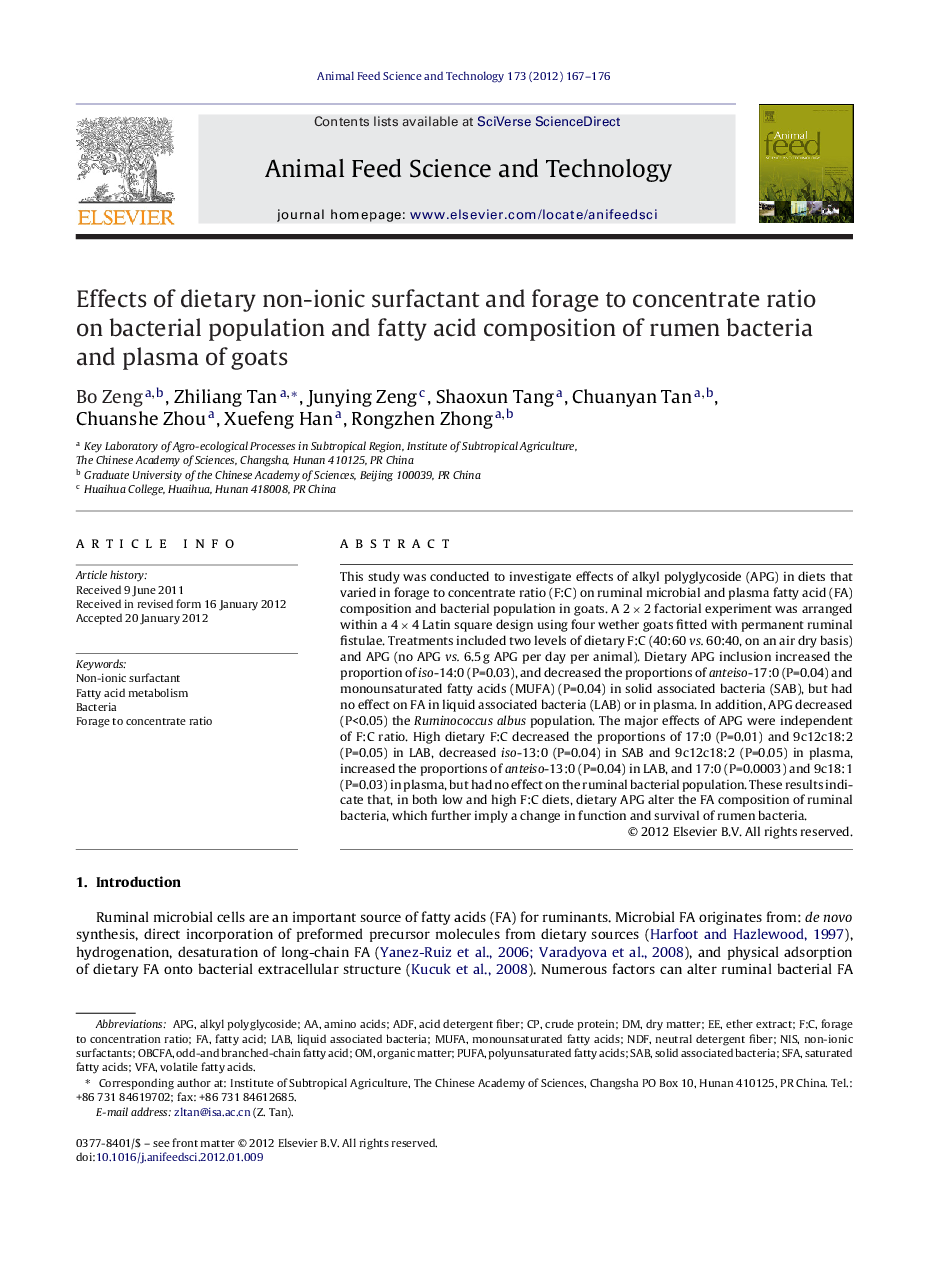| Article ID | Journal | Published Year | Pages | File Type |
|---|---|---|---|---|
| 2419934 | Animal Feed Science and Technology | 2012 | 10 Pages |
This study was conducted to investigate effects of alkyl polyglycoside (APG) in diets that varied in forage to concentrate ratio (F:C) on ruminal microbial and plasma fatty acid (FA) composition and bacterial population in goats. A 2 × 2 factorial experiment was arranged within a 4 × 4 Latin square design using four wether goats fitted with permanent ruminal fistulae. Treatments included two levels of dietary F:C (40:60 vs. 60:40, on an air dry basis) and APG (no APG vs. 6.5 g APG per day per animal). Dietary APG inclusion increased the proportion of iso-14:0 (P=0.03), and decreased the proportions of anteiso-17:0 (P=0.04) and monounsaturated fatty acids (MUFA) (P=0.04) in solid associated bacteria (SAB), but had no effect on FA in liquid associated bacteria (LAB) or in plasma. In addition, APG decreased (P<0.05) the Ruminococcus albus population. The major effects of APG were independent of F:C ratio. High dietary F:C decreased the proportions of 17:0 (P=0.01) and 9c12c18:2 (P=0.05) in LAB, decreased iso-13:0 (P=0.04) in SAB and 9c12c18:2 (P=0.05) in plasma, increased the proportions of anteiso-13:0 (P=0.04) in LAB, and 17:0 (P=0.0003) and 9c18:1 (P=0.03) in plasma, but had no effect on the ruminal bacterial population. These results indicate that, in both low and high F:C diets, dietary APG alter the FA composition of ruminal bacteria, which further imply a change in function and survival of rumen bacteria.
